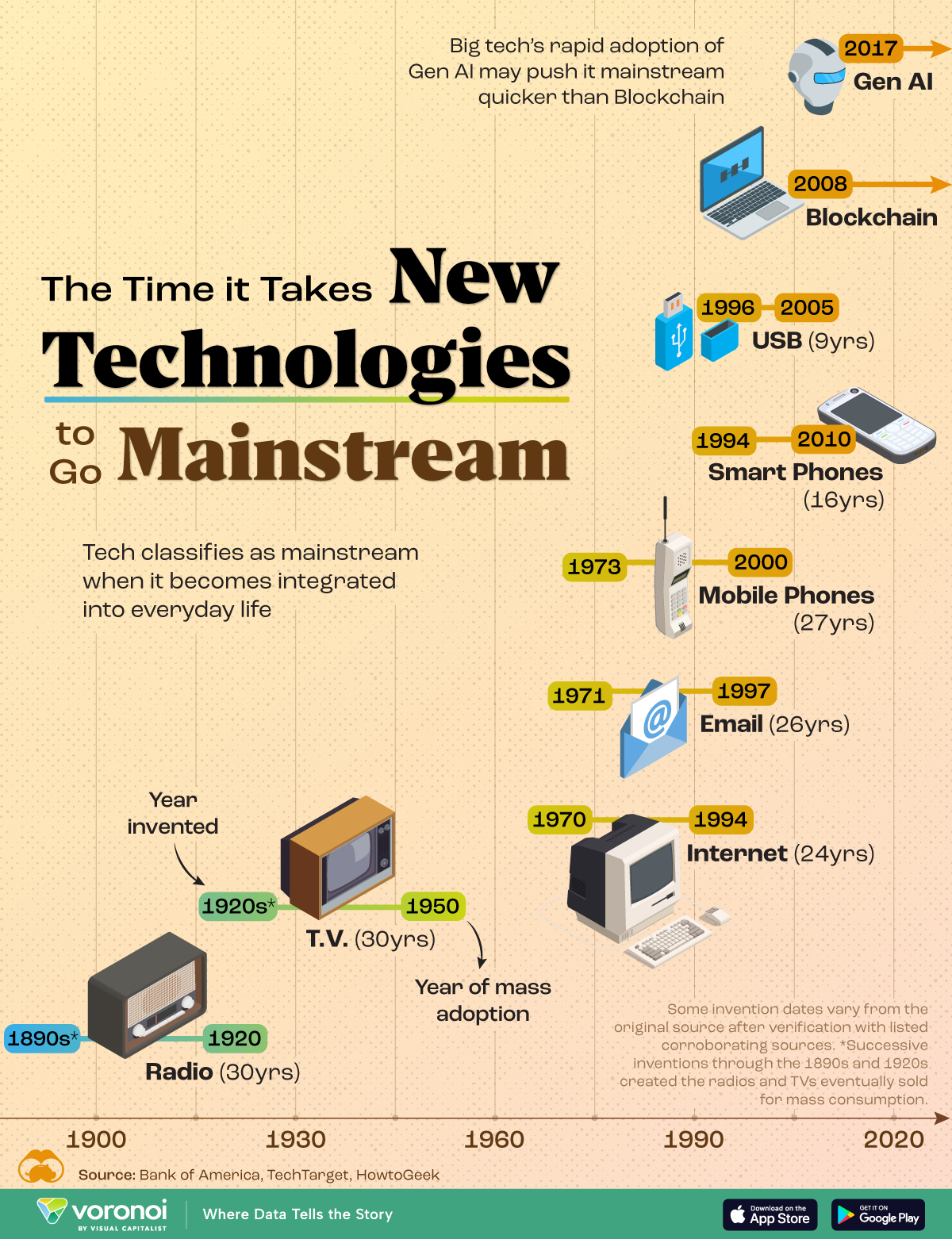

Innovation cycles tend to build upon each other, reducing the time taken between each milestone.For example, the first wave of the Industrial Revolution took half a century, while later advancements like electrification occurred in just a few decades, and today’s digital innovations happen in just a few years.As a result, the mainstream adoption of new technology has accelerated. We illustrate this phenomenon by comparing the invention year of disruptive technologies with the year they became widely adopted.Data is sourced from the Bank of America’s “AI: From Evolution to Revolution” report, published in September 2024. Some invention dates vary from the original source after verification with other listed corroborating sources: The Guardian, TechTarget, and HowToGeek.
How Long Will it Take Generative AI to Become Mainstream?It took radio and TV at least three decades to go from invention to mainstream use. And once they proliferated, an entirely new sector—mass media—evolved, a key driver of globalization.
Note: *Multiple inventions through the decades of the 1890s and 1920s eventually created mass-market TVs and radios.The invention of the internet, email, and mobile phones also followed a roughly 30-year cycle until mass adoption. Each technology required substantial investment and lead time to establish the necessary communications infrastructure, including cables, towers, and transmitters.However, the time between the invention of the first smartphone and the release of the first iPhone dropped to just 13 years. By 2010, smartphones began to overtake traditional mobile phones in the market.Now we turn to generative AI. Although the concept dates back to the 1960s, recent developments in generative adversarial networks (GANs) and transformers have propelled machine learning to an advanced scale. After the release of ChatGPT and Gemini, the mainstream adoption of AI for everyday tasks is now underway especially as big tech companies integrate it into their products.In fact, Bank of America researchers estimate that “AI-driven efficiencies” will be seen across sectors as early as 2025.More By This Author:China’s Cobalt Supply Dominance By 2030 The EU’s Major Trade Partners In One Chart Ranked: The Most Popular Generative AI Tools In 2024














